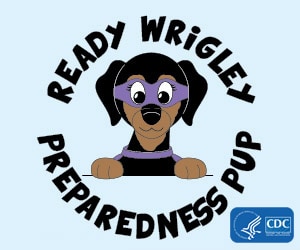Emergency Kit Checklist for Families with Children and Youth with Special Healthcare Needs (CYSHCN)
If a child with special healthcare needs is part of your family it is very important to be prepared for an emergency in which you may have to stay inside for longer than usual or in the event the electricity goes out. An emergency kit is necessary for all families, and especially important for families of children with special healthcare needs.
An emergency kit has all of the things that you and your family may need during an emergency. In addition to the common items found on the emergency kit checklist for kids and families page, the checklist described here contains items that are specific for families of children and youth with special healthcare needs (CYSHCN). Each family’s kit will vary depending on the individual needs of their child. It is best to have all of these things collected before an emergency, stored in a container, and kept in a place that is safe and easy to get to in the event of an emergency. Making a family emergency kit can be fun for the family to do together. Here’s how to have a family emergency kit treasure hunt:
- You will need a large plastic bin or box to put things into.
- Answer the following questions to guide your treasure hunt.
- Check items off the list as you put them into your emergency kit box.
- Place an updated copy of your checklist inside your large plastic bin or box once your kit is put together to know what is inside the kit and to know where you can always find your checklist.
Click the titles below to expand the list of items for that section.
- Keep canned or packaged food in a cool, dry place (check the expiration dates at least twice per year)
- Store boxed food in tightly closed plastic or metal containers
- Replace water supply every six months
- Review your needs every year and update your kit as your family’s needs change (update medical and personal records at least once per year)
- Prepare separate kits for your home, work, and your vehicle since you never know where you’ll be when an emergency happens
- If you can’t contact your doctor or pharmacy in a disaster, ask for help from emergency responders or staff at emergency shelters or service centers
